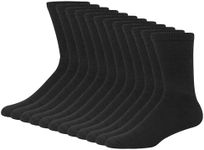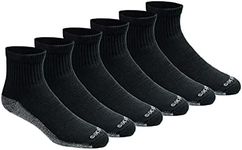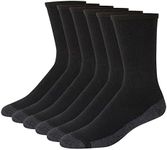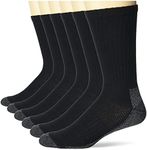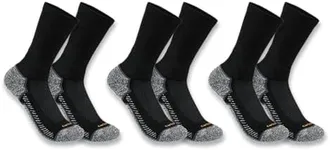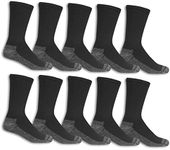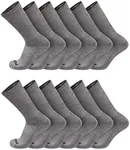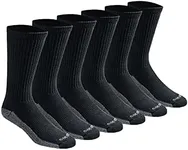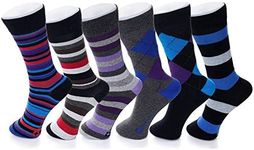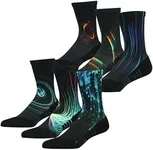Buying Guide for the Best Work Socks
Choosing the right work socks is essential for comfort, durability, and overall foot health, especially if you spend long hours on your feet. The right pair of work socks can prevent blisters, keep your feet dry, and provide the necessary support. When selecting work socks, consider the material, cushioning, fit, and additional features that cater to your specific work environment and personal needs.MaterialThe material of the socks is crucial as it affects comfort, breathability, and durability. Common materials include cotton, wool, and synthetic blends. Cotton is soft and breathable but may not wick moisture well. Wool is excellent for warmth and moisture-wicking but can be too warm for some environments. Synthetic blends often combine the best features of both, offering moisture-wicking, durability, and comfort. Choose a material based on your work environment: cotton for light, indoor work; wool for cold, outdoor work; and synthetic blends for high-activity or varied conditions.
CushioningCushioning in work socks provides comfort and reduces foot fatigue. It can range from light to heavy. Light cushioning is suitable for tight-fitting shoes or less strenuous activities, while medium cushioning offers a balance of comfort and support for most work conditions. Heavy cushioning is ideal for high-impact activities or prolonged standing, providing maximum comfort and shock absorption. Consider the nature of your work and the type of footwear you use to determine the appropriate level of cushioning.
FitThe fit of the socks is important to prevent blisters and ensure comfort. Socks should fit snugly without being too tight. Look for socks with a good elastic band that stays up without cutting into your skin. Some socks offer arch support and a contoured fit, which can be beneficial for added comfort and stability. Ensure the socks match your shoe size and consider any specific fit features that might benefit your foot shape or work activities.
Moisture-WickingMoisture-wicking properties help keep your feet dry by drawing sweat away from the skin. This is important to prevent blisters, odor, and fungal infections. Materials like wool and synthetic blends are typically good at moisture-wicking. If you work in a hot or humid environment or have sweaty feet, prioritize socks with excellent moisture-wicking capabilities to maintain foot health and comfort.
DurabilityDurability is a key factor, especially if you are in a physically demanding job. Durable socks are made from high-quality materials and reinforced in high-wear areas like the heel and toe. Look for socks with reinforced stitching and materials known for their strength, such as nylon or polyester blends. If your work involves a lot of movement or harsh conditions, investing in durable socks will save you money and discomfort in the long run.
Temperature RegulationTemperature regulation is important to keep your feet comfortable in various conditions. Some socks are designed to keep your feet warm in cold environments, while others are made to keep them cool in hot conditions. Wool is great for warmth, while synthetic blends can offer cooling properties. Consider the typical temperature of your work environment and choose socks that will help maintain a comfortable foot temperature.
CompressionCompression socks provide graduated pressure to improve blood circulation and reduce swelling. This can be particularly beneficial if you stand or sit for long periods. Compression levels range from mild to firm. Mild compression is suitable for general comfort, while moderate to firm compression is better for significant swelling or circulatory issues. Assess your daily activities and any specific health needs to determine if compression socks are right for you.
